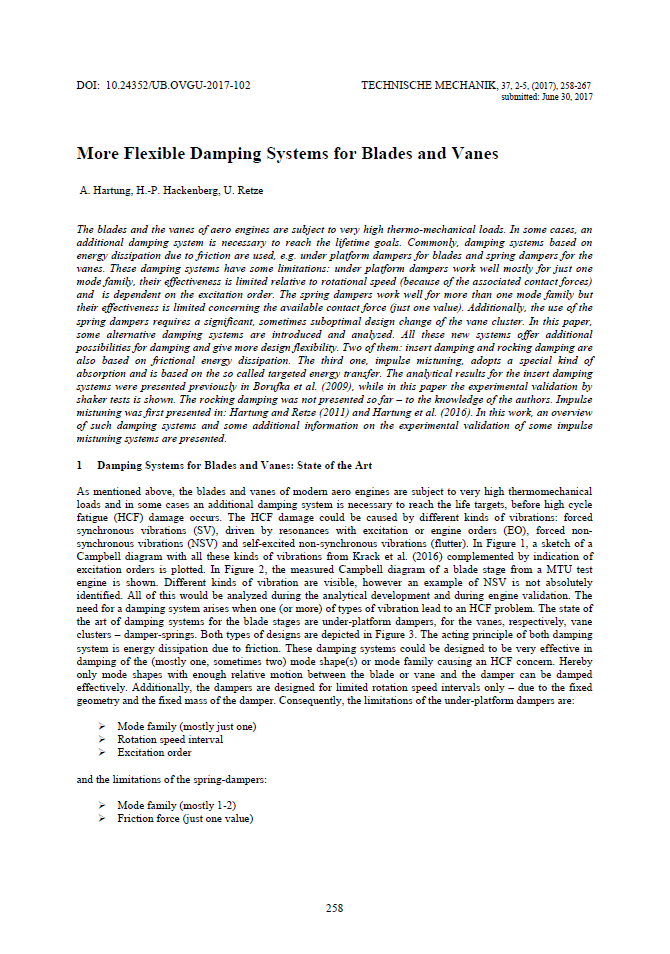More Flexible Damping Systems for Blades and Vanes
DOI:
https://doi.org/10.24352/UB.OVGU-2017-102Abstract
The blades and the vanes of aero engines are subject to very high thermo-mechanical loads. In some cases, an additional damping system is necessary to reach the lifetime goals. Commonly, damping systems based on energy dissipation due to friction are used, e.g. under platform dampers for blades and spring dampers for the vanes. These damping systems have some limitations: under platform dampers work well mostly for just one mode family, their effectiveness is limited relative to rotational speed (because of the associated contact forces) and is dependent on the excitation order. The spring dampers work well for more than one mode family but their effectiveness is limited concerning the available contact force (just one value). Additionally, the use of the spring dampers requires a significant, sometimes suboptimal design change of the vane cluster. In this paper, some alternative damping systems are introduced and analyzed. All these new systems offer additional possibilities for damping and give more design flexibility. Two of them: insert damping and rocking damping are also based on frictional energy dissipation. The third one, impulse mistuning, adopts a special kind of absorption and is based on the so called targeted energy transfer. The analytical results for the insert damping systems were presented previously in Borufka et al. (2009), while in this paper the experimental validation by shaker tests is shown. The rocking damping was not presented so far – to the knowledge of the authors. Impulse mistuning was first presented in: Hartung and Retze (2011) and Hartung et al. (2016). In this work, an overview of such damping systems and some additional information on the experimental validation of some impulse mistuning systems are presented.





